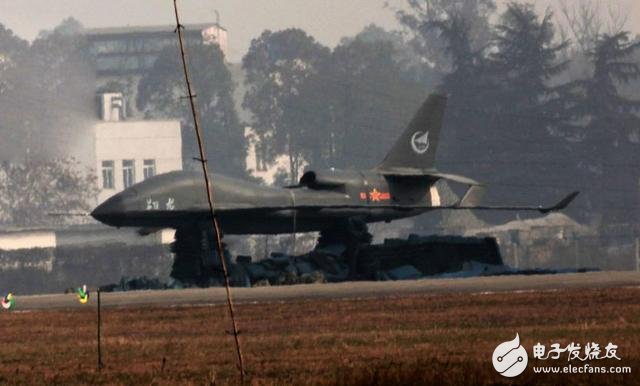The Times of India said that the Chinese People's Liberation Army is deploying a drone "Xianglong" with detection, signal interference and digital combat capabilities on land borders including the Himalayan border region bordering India. As a Chinese domestic drone, the flying speed of Xianglong can reach 750 km/h.
The report quoted Chinese media as saying that the "Xianglong" drone with aerial work and long-lasting flight was a response to the US RQ-4 "Global Hawk" reconnaissance aircraft. The "RQ-4 Global Hawk" is considered to be the most famous unmanned reconnaissance aircraft in the world. The Indian media reported that once the People's Liberation Army introduced "Xianglong", the drone may be deployed in the Himalayan border area between China and India, as well as the South China Sea and the East China Sea. In the South China Sea and the East China Sea, China has territorial disputes with the Philippines, Vietnam and Japan.
The Times of India said that China has already sold military drones to other countries and may be able to see such advanced drones in Pakistan. The Xianglong drone was still under test before introducing the Chinese army.

Data map: photos of suspected "Xianglong" drones being tested online
Wang Ya-nan, deputy editor-in-chief of Aviation Knowledge Magazine, said, "The unique design of 'Xianglong' makes it suitable for high-altitude long-term operations. Once the 'Xianglong' drone is in service, it will enhance the PLA's long-range reconnaissance capability." He added: " In addition, this drone provides a good platform for electronic warfare such as signal intelligence gathering and electronic interference."
The British military magazine Air Force Monthly said that the "Xianglong" UAV can operate continuously for 10 hours and its flying height can reach 18,000 kilometers.
Indian netizens also expressed great concern about this news. Indian netizen Terence Fernande suggested: "India needs to deploy a highly advanced and high-resolution satellite network to track and monitor all changes in the range of at least 100 square meters." Indian netizens expressed their disappointment with their country. Netizen "No Compete" said: "Everything in India is bought. Everything in China is made by itself. India competes with China? Just kidding."
Micro inverter is a small inverter used in solar power generation systems, its main function is to convert the direct current generated by a single Solar Panel into alternating current. Unlike traditional centralized inverters, microinverters are usually equipped with one per solar panel, that is, each solar panel has an independent microinverter.
Main effect:
1. Individual control: The microinverter provides independent conversion control for each solar panel, which means that each solar panel can optimize its power output individually. This maximizes the power generation efficiency of the solar panels since shading or other influences only affect the power generation efficiency of individual panels, not the entire array.
2. Reliability: Since each solar panel is equipped with a micro-inverter, even if one of the inverters fails, the other panels can still work normally, thereby improving the reliability of the entire system.
3. Flexible installation: Micro-inverters are usually small and can be installed near solar panels without being concentrated in one location, so installation is more flexible and convenient.
Differences from other inverters:
1. Individual control: Compared with traditional centralized inverters, microinverters provide independent conversion control for each solar panel, enabling each panel to reach its maximum power output.
2. Fault isolation: The micro-inverter has the function of fault isolation. Even if one of the inverters fails, other panels can continue to work without affecting the operation of the entire system.
3. Installation method: The micro-inverter can be flexibly installed near the solar panel, and does not need to be concentrated in one location, so the installation is more flexible and convenient.
4. Applicable scale: micro-inverters are usually used in small-scale solar power generation systems, while traditional centralized inverters are suitable for larger-scale photovoltaic power plants.
Overall, the main role of microinverters is to individually control and optimize the power generation efficiency of solar panels and improve the reliability of the system. Compared with traditional centralized inverters, it has some advantages in terms of flexibility, fault isolation and applicable scale.
grid tie micro inverter, off grid solar micro inverter, hoymiles microinverter price, micro inverter solar system, solar system with micro inverters
Ningbo Autrends International Trade Co., Ltd. , https://www.aitsolarpanels.com